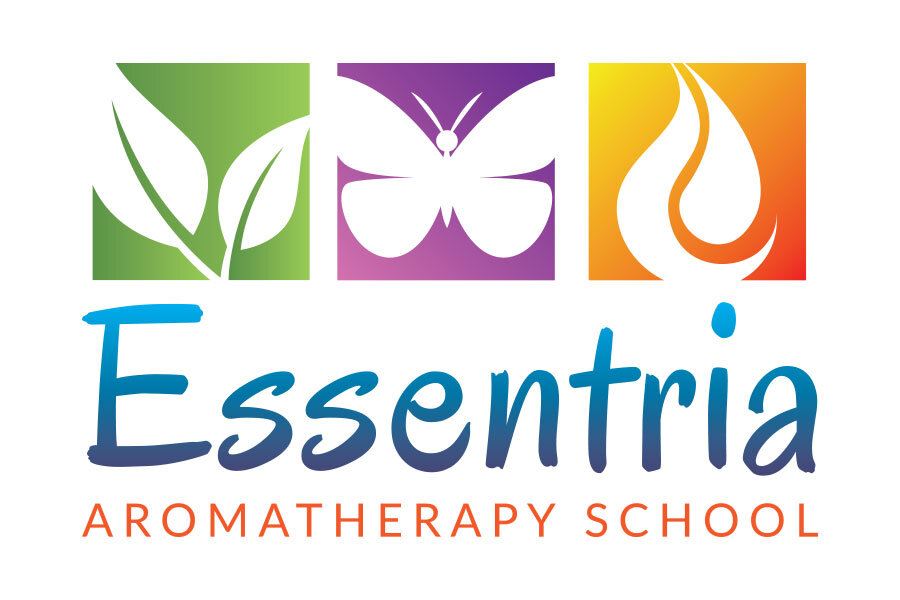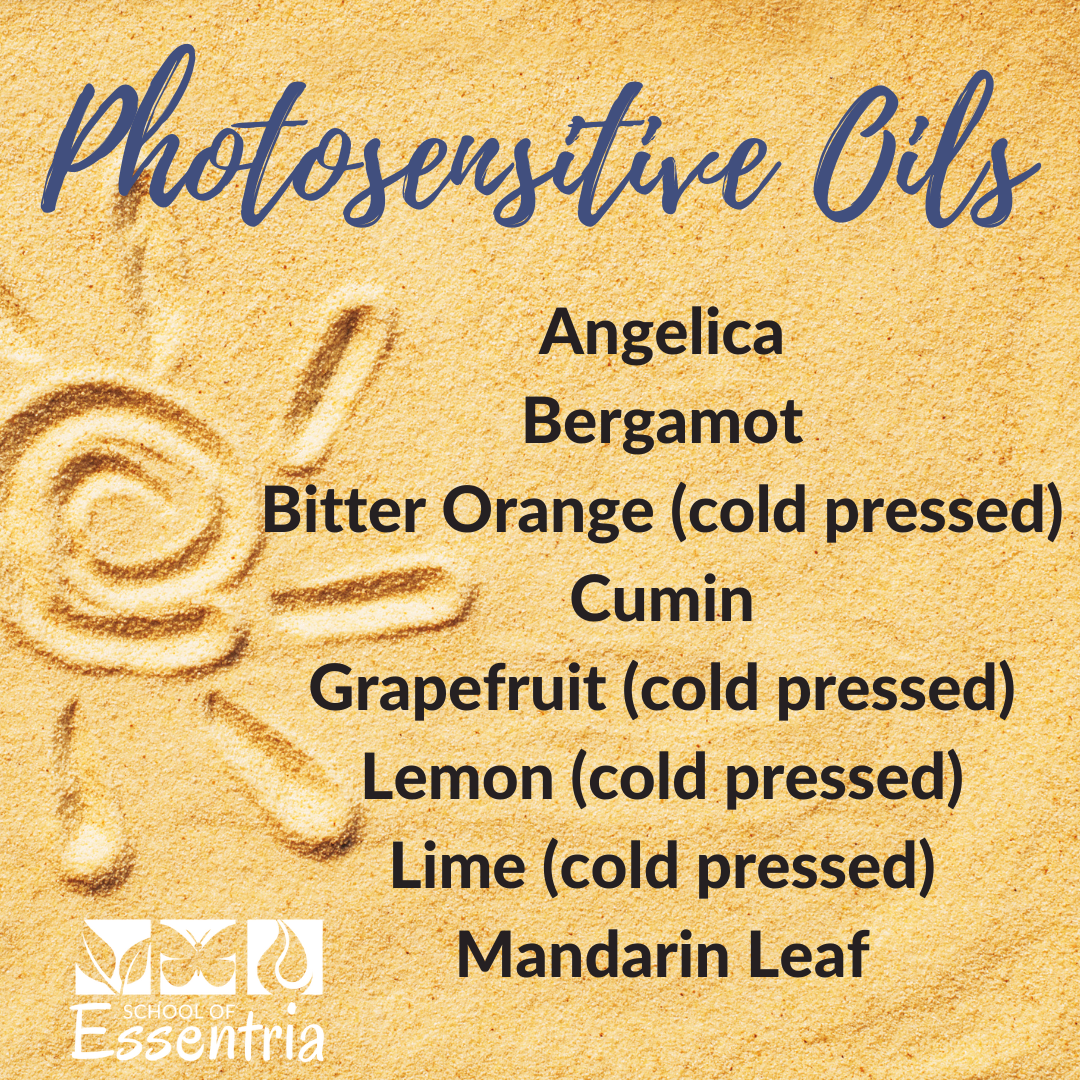Sun Safety with Essential Oils
Great Tips on How to Use Essential Oils Safely in The Sun
Did you know that not all essential oils are safe in the sun? Some essential oils are phototoxic, which means they can cause a terrible rash, blistering and increase your risk of burning when exposed to UV rays and the sun (also called photosensitive essential oils). Not all essential oils are unsafe, just some, knowing is so important, because once you do experience a phototoxic reaction, you increase the risk of sensitivity to essential oils.
You can read about Essential Oil Sensitivity here.
The following essential oils should be avoided in the sunlight or UV exposure.
Angelica
Bergamot
Bitter Orange (cold pressed)
Cumin
Grapefruit (cold pressed)
Lemon (cold pressed)
Lime (cold pressed)
Mandarin leaf
A phototoxic reaction can look like blistering after being exposed to sun/UV rays. It can also cause long term sensitivity to essential oils even when not exposed to the sun.
There are specific dermal maximums and dilutions that can potentially make these essential oils sun safe.
This list is not exhaustive, there are more essential oils and carrier oils that pose a phototoxic risk.
Cold-Pressed Citrus vs Steam Distilled Essential Oils
You’ll notice we made a clear distinction between how some essential oils are extracted and what their risks are. This is because the chemical constituents that cause a phototoxic reaction don’t actually come through on the distilled essential oil. So this means that if you prefer to use those essential oils, you can look for a label that says FCF, which means FuranoCourmarin Free. This means the supplier specifically obtained essential oils that were distilled for sun safety.
Not all furanocoumarins cause photosensitivity, so the fact that they are present doesn’t necessarily imply risk either, but it's best to avoid sunlight unless you are trained in the specific constituents.
Essential Oil Dilution Matters
All essential oils should always be diluted, we never suggested using them neat (undiluted). Some main reasons include:
About 90% of a neat essential oil will evaporate, they are highly volatile, so rather than waste 90% of your essential oils, why not dilute them with a carrier oil and get close to 90% of the essential oil into the body topically? It just makes more sense, right?
Undiluted essential oils increase your risk of developing an essential oil sensitivity. While temporarily you may get over a reaction, there is some evidence to suggest that eventually some people develop a permanent sensitivity and possibly an allergy to either the specific oil that caused the reaction or in some cases, all essential oils. So it just makes sense to use them diluted so you don’t ruin your future with these wonderfully effective tools.
Every essential oil has its own dilution rate. Yep, it's not a one size fits all scenario, so you will need to know what dilution rate you need for those particular oils.Chemistry matters, some essential oils share constituents and when you pair them into a blend, you increase a specific chemical that needs to be kept at a specific dilution. Think like oregano and thyme, both essential oils have chemicals that should be diluted at less than 1%, but if you used both of these essential oils in a blend, you would need to blend based on the chemistry, not just the dilution rate.Each part of our body needs special consideration. For example the face has thinner and more delicate skin, so you would use essential oils in a much lower dilution than say the legs or feet.
Age does matter, when we are young, our skin is thin and vulnerable, as we reach adulthood to middle age it gets thicker and more resilient, then as we reach our elder years, our skin becomes thin and more vulnerable again. So believe it or not, how old you are actually affects how diluted your essential oils should be.
Lastly if you are working with an aromatherapist, they will likely know what dilution your essential oils need to be diluted that have phototoxic risks to prevent a phototoxic reaction. Yes some oils may still be used in the sun, but an aromatherapist is better suited for that, as they can effectively weigh the risk of using a phototoxic essential oil at all or just replacing it.
How Long You Should Avoid The Sun When Using Essential Oils
So many things to consider with essential oils and aromatherapy. When using phototoxic essential oils, the time you need to stay out of the sun may vary based on the essential oils. Some suggest a standard 12 hours, some as many as 72 hours. Again this a chemistry thing and a trained aromatherapist will understand these parameters.
How to Treat a Phototoxic Reaction Caused By Essential Oils
If you do have a reaction, it may not appear for 24-72 hours after the exposure to sunlight.
First off, don’t try to treat your photosensitive burn caused by essential oils with essential oils. This can lead to more issues and further reactions.
The best line of treatments is to wash the essential oils off, use cold compresses and supportive carrier oil to assist with healing. Carrier oils we like for skin healing include; borage, evening primrose, hempseed, jojoba and rosehip. Blending a carrier oil with an infusion can promote healing, infusions we love for skin healing are; calendula, carrot root and tumeric root.
It's Not Just Essential Oils, Some Carrier Oils May Not Be Sun Safe Either
Just when you thought you got the essential oils worked out, we threw a wrench into your dilution plans! This is why we stress training and working with professionals so much, there is so much to consider. While the evidence appears to be conflicting, we suggest that you avoid using St. John’s Wort in the sun. Some studies say it's protective, some say it can cause sensitivity, so better to be safe than sorry. And there are at least a dozen or more options for carrier oils with similar benefits you can explore instead of taking risks anyways. Check out our blog about carrier oils to learn more about carrier oils.
Best Practice for Essential Oil Sun Safety
Just avoid phototoxic oils on the skin that will be exposed to sun or UV rays. This will eliminate the issue entirely. If you absolutely love a blend you created yourself, an aromatherapist can save you money and health risks, so just reach out and get them to help you recreate something that’s working but is sun safe or help guide you on other alternatives to topical use for your health concerns.
Grab some FREE tools to help you on your essential oils journey.
Follow us for FREE educational and fun posts daily and don’t forget to subscribe to our newsletter for access to discounts and promos!
LEARN MORE WITH ESSENTRIA
Want to learn more about how to use essential oils in your home? Check out our free no strings attached online course here.
Plus consider joining us in our Facebook group Love Essential Oils with Essentria where we post tips and tricks on how to use aromatherapy safely in your daily life.
Want to learn more about how to become an aromatherapist, check out our certification courses and bundles offered online here.






